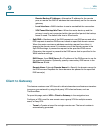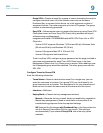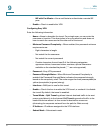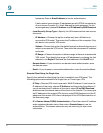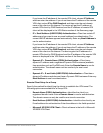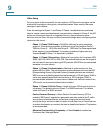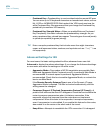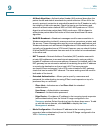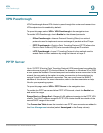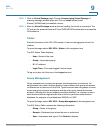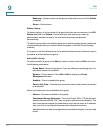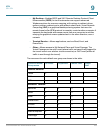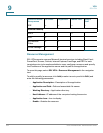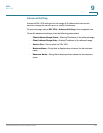
VPN
Client to Gateway
98 Cisco RV320/RV325 Administration Guide
9
• AH Hash Algorithm—Authentication Header (AH) protocol describes the
packet format and default standards for packet structure. When AH is the
security protocol, protection is extended forward into the IP header to verify
the integrity of the entire packet. Check the box to use this feature and
select an authentication method: MD5 or SHA1. MD5 produces a 128-bit
digest to authenticate packet data. SHA1 produces a 160-bit digest to
authenticate packet data. Both sides of the tunnel should use the same
algorithm.
• NetBIOS Broadcast—Broadcast messages used for name resolution in
Windows networking to identify resources such as computers, printers, and
file servers. These messages are used by some software applications and
Windows features such as Network Neighborhood. LAN broadcast traffic is
typically not forwarded over a VPN tunnel. However, you can check this box
to allow NetBIOS broadcasts from one end of the tunnel to be rebroadcast
to the other end.
• NAT Traversal—Network Address Translation (NAT) enables users with
private LAN addresses to access Internet resources by using a publicly
routable IP address as the source address. However, for inbound traffic, the
NAT gateway has no automatic method of translating the public IP address
to a particular destination on the private LAN. This issue prevents
successful IPsec exchanges. If your VPN router is behind a NAT gateway,
check this box to enable NAT traversal. The same setting must be used on
both ends of the tunnel.
• Extended Authentication—Allows you to specify a username and
password for authenticating incoming IPSec tunnel requests on top of a
preshared key or certificate.
- IPsec Host—Indicates use of an IPsec Host for extended
authentication.
User Name—Authentication username.
Password—Authentication password.
- Edge Device—Provides an IP address to the incoming tunnel requestor
(after authentication) from the Virtual IP range configured in the
Summary window. Select the device from the drop-down menu. To add
or edit the device domain, click Add/Edit to display the User
Management window.
• Mode Configuration—Provides an IP address to the incoming tunnel
requestor (after authentication) from the Virtual IP Range configured in the
VPN > Summary window.



